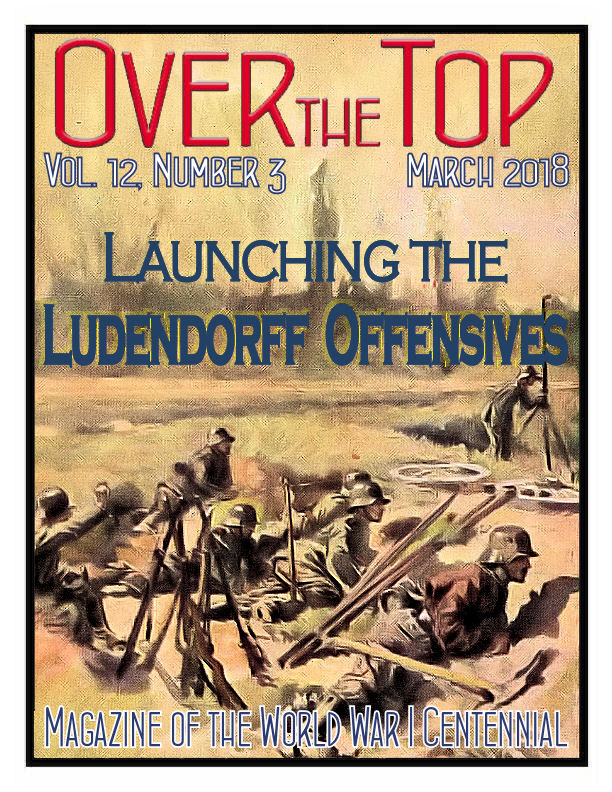
March
2018 |
 |
|
|


My AEF Battlefield Guide
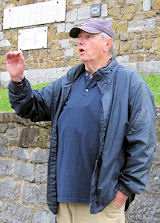
Your Editor Sharing His
Insights at a Site on
the Western Front
|
Some of our readers may have learned of this elsewhere, but my new guide to the Battlefields of the American Expeditionary Force has received a tremendous response from the World War I community. Authors of histories of the AEF, officials and staff of both the WWI Centennial Commission and the American Battle Monuments Commission, and members of the World War One Historical Association and the Western Front Association have praised the work. Here are some of the comments I've been receiving:
It is a wonderful document for novice historians like me. TH. . . Congratulations on the new battlefield guide. It looks great–and is very well timed, too MVE. . . Fantastic! Exactly what I have been searching for. SS. . . Congratulations, Mike. This is a much-needed resource. LB. . . Looks marvelous; so many places I remember, and many more I look forward to learning about. KC. . . It looks great! LP. . . Thank you so much for taking the time to put together this well put together condensed guide. I absolutely love it. MW.
I've included full information on the battlefield guide below. On Page Two, you will see samples and details about the volume, plus full ordering information. And, one further detail for you.
Twenty-five percent of all revenues will be contributed to building the National World War One Memorial at Pershing Square in the nation's capital.
MH

|
2018
USMC WWI Historical Symposium
Marine Corps University
Quantico, VA
18-20 July 2018
Email Contact for Information:
USMC@WorldWar1Centennial.org
2018 Symposium – 1918: Crucible of War
National WWI Museum & Memorial
Kansas City, MO
1-3 November 2018
Registration & Details: HERE
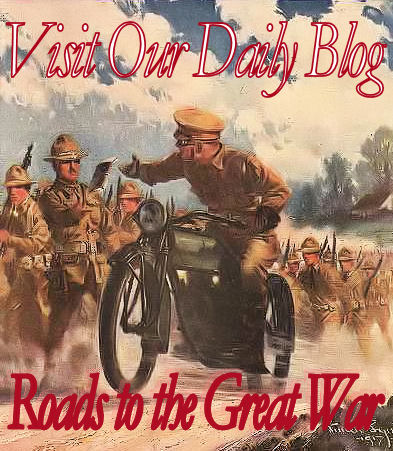
Click on the Image to Visit Our Daily Blog.
|
|
Portrait of the Month
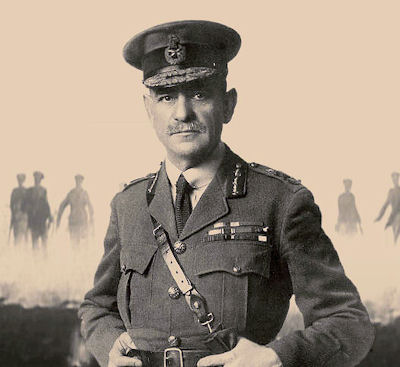
General Sir John Monash
In 1918, Australian General John Monash (1865-1931) would earn the reputation of master tactician. Named commander of the Australian Corps in June, he would deliver memorable victories at Hamel, Amiens, and the Hindenburg Line before the Armistice. Monash had been a lower-rung general at Gallipoli. Had his gifts been identified earlier, perhaps history might have changed. Certainly, if he had been charged with leading the August 1915 re-start at Suvla Bay things would have been better organized.

Overlooked Combat Specialties: Engineers, Pioneers, Sappers, and Tunnelers
The Canadian Engineering Corps presents a nice summary of the importance of the various engineering specialties in waging war: "Military engineers. . . permit friendly forces to
“Fight, Move, and Live” while denying the same to the enemy. [Military engineering] encompasses the use of demolitions and landmines, the design,
construction and maintenance of defensive works and fortifications, lines of communications, and bridges.
They also provide water, power, and other utilities, provide fire, aircraft crash and rescue services, hazardous
material operations, and develop maps and other engineering intelligence. In addition, military engineers are
experts in deception and concealment, as well as the design and development of equipment necessary to carry
out these operations.
 What Is a Sapper?
What Is a Sapper?
 Australian Engineers in the First World War
Australian Engineers in the First World War
 The Mines of Messines
The Mines of Messines
 Engineering Challenges for the AEF
Engineering Challenges for the AEF
 The Maori Pioneer Battalion at War
The Maori Pioneer Battalion at War
 French Engineering Work and Monument at Les Eparges
French Engineering Work and Monument at Les Eparges
 Book Review: Beneath the Killing Fields by Matthew Leonard
Book Review: Beneath the Killing Fields by Matthew Leonard
 Firsthand Account: A Sapper in Palestine
Firsthand Account: A Sapper in Palestine

A Number from the Great War
158
This is the number of countries involved in some way in the First World War. It includes countries that did not declare war on anyone but may have been encouraged to send troops or found themselves occupied. The full list and some details about the various countries can be found HERE.

The Doughboy's Sense of Self
The doughboy's military training set him apart from others. In less
obvious ways as well, life in the Army contributed to the creation of the
doughboy folk. The Army issued each man one of the newfangled safety
razors. The Army taught the doughboy to stand naked in line to be
deloused and to submit to its relentless curiosity about the condition of his
private parts. The cigarette came into vogue. The wristwatch, long
considered an effeminate device, became a popular item, partly because
there was no place on the uniform for the old pocket watch and fob and
because a famous war correspondent, Richard Harding Davis, wore one.
The Army prescribed for sexual behavior by declaring unreported venereal
disease an unlawful affliction and by training men in the use of the
prophylaxis station. Basic training shaped the soldier's ideas of what the
correct pose of the accomplished warrior should be. It served to blur all
former social attachments—"knifing off" the old associations which
interfere with group assimilation. The severe haircut and the many
personal indignities jarred loose the civilian outlook and rearranged it into
an army outlook in a process which Robert Jay Lifton described for men of
a later war as "a form of symbolic death and rebirth."
Robert Sandels
Essay, "The Doughboy as Folk"
|

|

U.S. Centennial Organizations & Resources
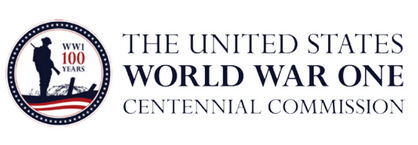
worldwar-1centennial.org/
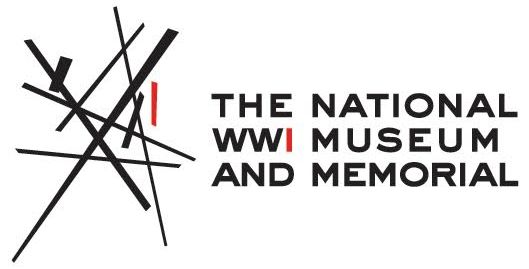
theworldwar.org/
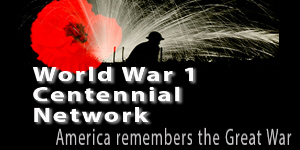
www.ww1-centennial.org/

www.firstdivisionmuseum.org/

www.abmc.gov/
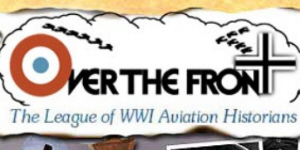
www.overthefront.com/
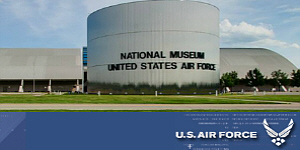
www.nationalmuseum.af.mil/
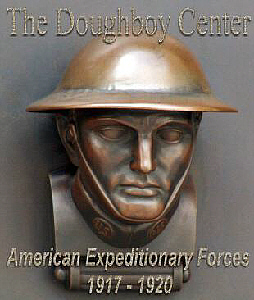
www.worldwar1.com/dbc/
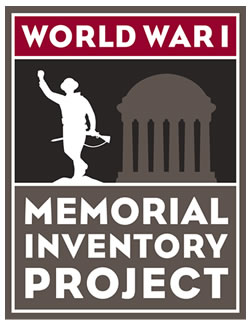
facebook.com/wwiinventory

wisconsinhistory.org/

www.uswarmemorials.org/
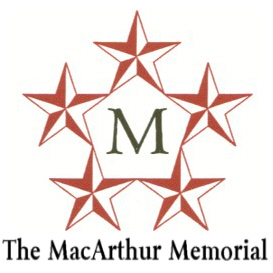
www.macarthurmemorial.org/

www.saving-hallowed-ground.org/
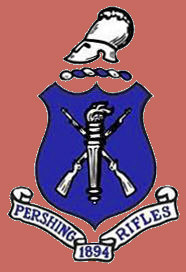
www.theprgroup.org/

pamilmuseum.org/
Support Worldwar1.com's Centennial Effort
Shop at Amazon.com
|
The Centennial Ticker
An American Expeditionary Force Battlefield Guide
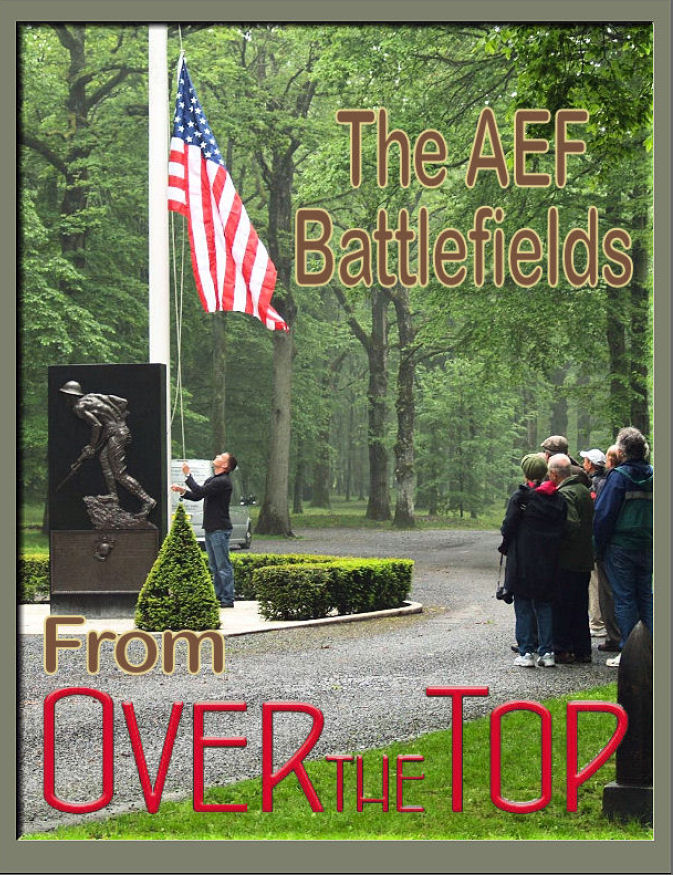
Since 1991, I have been leading First World War battlefield tours to the Western Front, Gallipoli, and Italy, and this will be my last year doing so. By far, the greatest interest for my groups has been in the American battlefields. Also, over the years I have received hundreds of inquiries through the Internet as to how to visit the site where a family member, a Doughboy, airman, Marine, or sailor served and how to gain information on what happened where they fought. What I decided to do for the subscribers of my publications was consolidate and organize all the information I have gathered over the years on the battlefields of the American Expeditionary Force to Europe into one document. I hope you will consider purchasing this compendium of all my research and on-site explorations on the subject, organized in a way that I believe is easy to follow. Here are some details about the work and how to purchase it.
The Battlefields Covered in This Guide
 Cantigny
Cantigny
 Château-Thierry, Belleau Wood, and Vaux
Château-Thierry, Belleau Wood, and Vaux
 Second Battle of the Marne
Second Battle of the Marne
 Flanders: Mt. Kemmel
Flanders: Mt. Kemmel
 Frapelle
Frapelle
 St. Mihiel Salient
St. Mihiel Salient
 Meuse-Argonne
Meuse-Argonne
 The Hindenburg Line & Beyond
The Hindenburg Line & Beyond
 Blanc Mont Ridge
Blanc Mont Ridge
 Flanders-Lys
Flanders-Lys
 Other Notable Operations
Other Notable Operations
Sample Section
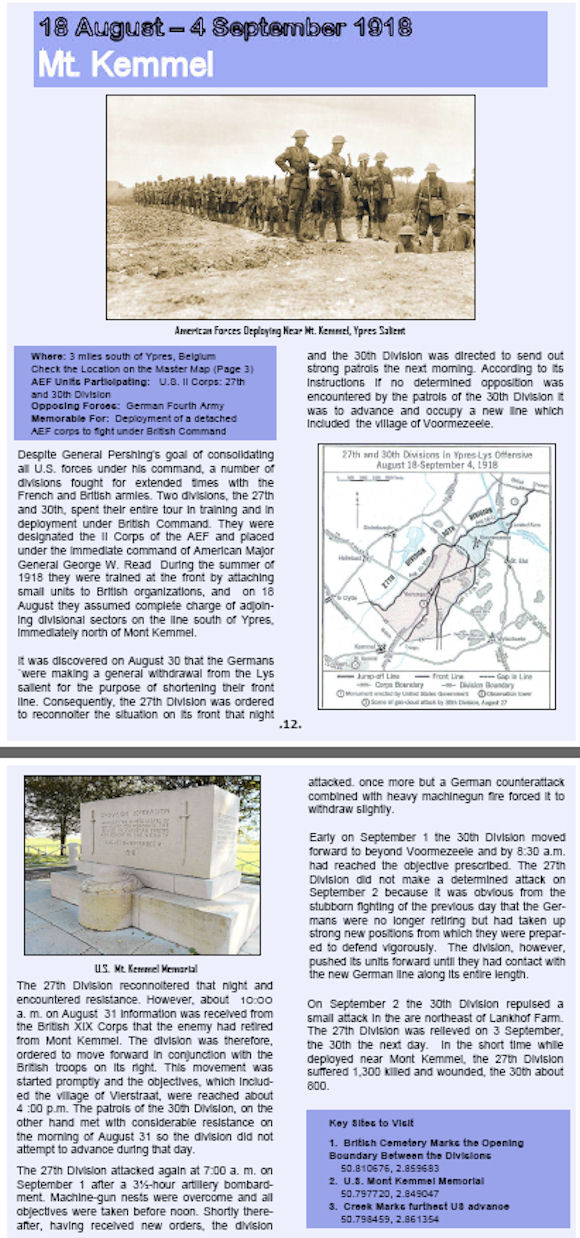
Specifications
 28-page, full color, large 8½ x 11 inch printable PDF Document, readable on desk tops, laptops or P.E.D. devices
28-page, full color, large 8½ x 11 inch printable PDF Document, readable on desk tops, laptops or P.E.D. devices
 10 major battles and 5 notable smaller operations covered
10 major battles and 5 notable smaller operations covered
 Each main section includes: quick facts, then-and-now photos, maps, details about the battle, and key sites to visit with GPS coordinates.
Each main section includes: quick facts, then-and-now photos, maps, details about the battle, and key sites to visit with GPS coordinates.
 Delivered electronically (Important! Don't forget to send your email address.)
Delivered electronically (Important! Don't forget to send your email address.)
Price: $14.99
How To Purchase


21 March 1918
The Trench War Ends and the Front Starts Moving
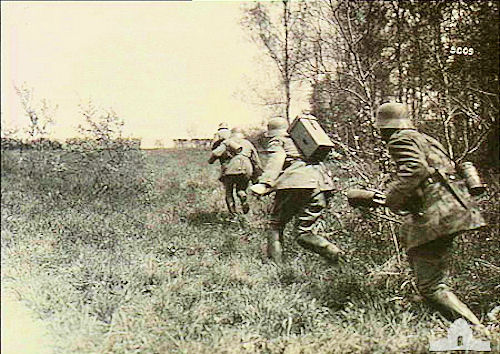
German Soldiers Infiltrating a British Position, Spring 1918
31 October 1914 was the day the war of movement on the Western Front stopped. Afterward, there would be no big breakthroughs until 1918, and 41 months of stagnant, but bloody, trench warfare would ensue. By mid-day on 31 October 1914 there were no more flanks, just one last gap in the entire line from the Swiss border to the English Channel where a breakthrough seemed possible. It was at a place five miles east of Ypres on the grounds of Gheluvelt Chateau, just north of the Menin Road.
Shortly before noon, the line of the British 1st Division was broken at Gheluvelt. If at that moment German reinforcements available close at hand could thrust through the gap and spread out fanwise, they could have rolled up the defenders on either flank in their rear and simply broken the cohesion of the British in Flanders to pieces. The impulse of retreat began to seize the British troops. Already men and guns were streaming back toward Ypres. The Germans quickly assembled 13 battalions for a final follow-through attack.
General Charles FitzClarence, commanding the British Army 1st Brigade, was nearby and saw the declining situation. At Polygon Wood north of Gheluvelt, he got hold of the 2nd Worcestershires, part of the reserve of the 2nd Division on the north, and ordered them to counterattack immediately. This movement had scarcely begun when a shell burst in Hooge Chateau, where the staff of both divisions had assembled for a conference, and practically destroying them.
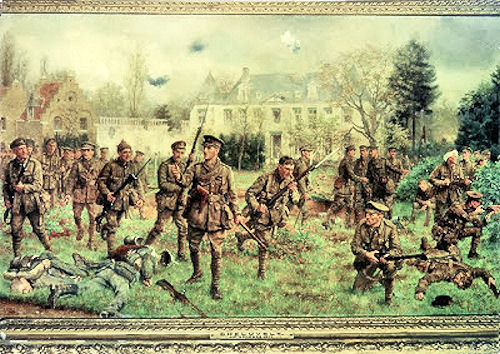
Plugging the Last Gap at Gheluvelt
31 October 1914
But the Worcestershires–a tiny force of eight officers and 360 men–swept all before them nonetheless. They fell upon their adversaries, who were mostly Bavarians, and drove them back in confusion from the chateau grounds. The line was reestablished. The Western Front of the Great War was effectively completed. General FitzClarence, sadly, did not have much longer to live. He died on 11 November 1914 in fighting along the Menin Road, where many more would fall in the remaining four years of war.
The years of trench warfare gave the general staffs time to study the problem of breaking the trench lines and conduct experiments—almost all of which failed—to accomplish this. By 1918, however, the combatants all had solutions they thought would do the trick, some combination of infiltration tactics, better artillery registration, shorter and more intense barrages of high explosive and gas, tanks, better coordination of infantry, engineers, artillery, and logistical support, etc.
The first general to apply his new "package" of trench busting techniques was German Quartermaster General Erich von Ludendorff. He planned to defeat the British Army north of Paris and then force the French to seek terms. His staff was instructed to develop a series of offensives targeting either the British directly or the French to fix them in place, reluctant to send reinforcement to their Allies. There were five major attacks that came to be called the "Ludendorff Offensives"—one each month from March to July–—and one for August that was canceled when the– French and Americans launched the first Allied counteroffensive of the year.
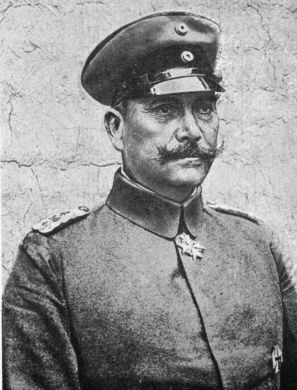
The Man of the Hour
Col. Bruckmüller
|
The first, and most memorable German operation of 1918, Operation MICHAEL, was launched in the Somme sector on the 21st of March. We will be covering the Ludendorff Offensives in all the publications of Worldwar1.com in the ensuing months, but the initial success of MICHAEL stunned the world, not to say the British Army.
In Ludendorff's package of solutions, the key was artillery. Col. Georg Bruckmüller, an obscure officer retired for nervous problems in 1913 but recalled to duty for the war, developed German artillery techniques to a fine art by the time of the Ludendorff Spring Offensives of 1918. The essence of the Bruckmüller artillery preparation was a carefully orchestrated, short but intense bombardment designed to isolate, demoralize, and disorganize enemy defenders.
The effect was increased by surprise. At the start of the German offensive on 21 March 1918, Bruckmüller began his bombardment with ten minutes of gas shells to force the British to mask, followed by four hours and 25 minutes of mixed gas and high explosives. The preparatory fires shifted back and forth so that the British did not know when the artillery was actually lifting for the infantry advance. Meanwhile, automatic rifle teams moved as close as possible to the British positions during the bombardment. When the Germans did advance, they moved behind a rolling barrage, further enhanced by intense fog. The combination of surprise, brevity, intensity, and carefully selected targets was unique. The power of this initial assault and exploitation allowed a 40-mile penetration and the capture of 1,200 sq. miles of territory. However, the Allies weren't beaten—the British Army didn't break and the French provided sufficient reinforcements—and the German push lost its moment. Ludendorff's solution was to apply his solution to other areas of the Western Front and hope for better results
Source: Roads to the Great War
|
|

Our 2018 Centennial Battlefield Tours
2018
The Kaiser's Offensives &
the British Army's 100 Days
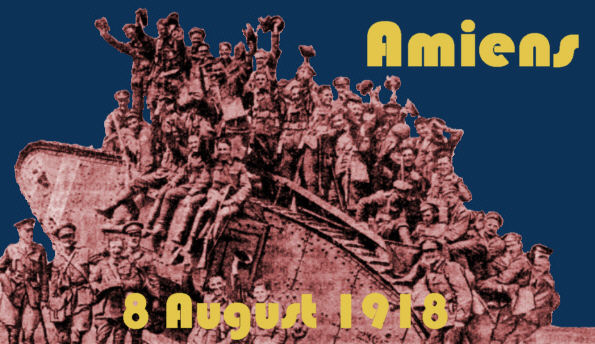
6 – 14 May 2018: Study of Germany's Last Effort to Win the War and the British Victory Offensive.
Includes: German advances in the Somme, Flanders, and the Marne Sectors, the Black Day of the German Army, the St. Quentin Canal, and the pursuit to Mons.
Reduced Price — $3,450 (dbl occupancy, sgl supp avail)
The full brochure covering the trip and registration details can now be downloaded
HERE
AEF: Pershing's Doughboys Centennial
Now Fully Booked – Waiting List Only
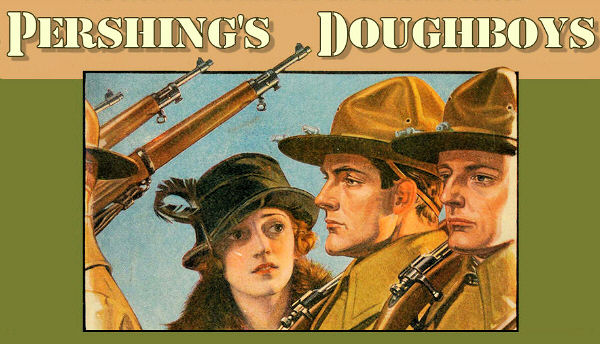
7 – 17 August 2018: Comprehensive Study of the American Expeditionary Force
Includes: All major battles, memorials, cemeteries, and service sites of your family members.
Price — $3,750 (dbl occupancy, sgl supp avail)
The full brochure covering the trip and registration details can now be downloaded
HERE
|
|
|
|
Thanks to each and every one of you who has contributed material for this issue. Until our next issue, your editor, Mike Hanlon. |
|
 (Or send it to a friend)
(Or send it to a friend)
|
Design by Shannon Niel
Content © Michael E. Hanlon
|
|
|








